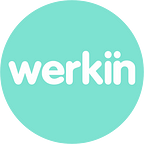How Technology Can Help Diversify the US Fashion Industry
In its The State of Fashion 2019 report, McKinsey predict the coming year will be shaped by “shifts in technology, social causes, and trust issues alongside the potential disruption from geopolitical and macroeconomic events.” Only those fashion brands that accurately reflect their customers’ needs and have the courage to innovate will thrive.
McKinsey’s 2018 report, Shattering the Glass Runway, revealed the fashion industry is sustained by women yet run by men. Women spend three times more on clothing than men yet fill the majority of entry level jobs. Fewer than 50 percent of well-known womenswear brands are designed by women and only 14 percent of major brands have a female executive in charge, despite women comprising 85 percent of the fashion customer base.
In their report, McKinsey partnered with Glamour and the Council of Fashion Designers of America (CFDA) to find out why. They surveyed 535 and interviewed 25 US-based professionals across the industry, both women and men at various tenure levels. The Glass Runway study explored both the sources of gender inequality and ways to overcome them.
The study found four primary sources of gender inequality:
· Ambiguous success criteria
· Disparity in sponsorship and mentorship
· Constraints of work-life balance
· Lacking awareness and commitment
The findings for the first two stand out for their clear double-standards.
Ambiguous success criteria
According to the survey, 80 percent of senior vice presidents and vice presidents report the criteria for career advancement in the fashion industry is clear. Yet only 65 percent of their female counterparts agree. Many more men at that level also report getting promoted without asking, though they are twice as likely to ask for a promotion.
Disparity in sponsorship and mentorship
The report also found women receive less career advice than men do. Across all levels, only 22 percent of women report getting advice to advance their careers, versus 33 percent of men. At the VP level, the gap widens markedly to 27 percent of women versus 45 percent of men.
Nike exited executives amid workplace misconduct
In April last year, amid complaints of a “boys’ club” culture at the sportswear giant, CEO Mark Parker announced an investigation into workplace misconduct. Four executives were asked to leave in an attempt to shakeup their corporate culture.
The following month, Nike’s head of HR Monique Matheson announced internally Nike has “failed to gain traction” in hiring diverse talent and that Nike’s leadership is still mostly white and male. Matheson introduced a number of measures to diversify its management, which she said would have a trickle-down effect to lower levels of the company. These include changing hiring practices and creating new development programs to invest in diverse talent.
Council of Fashion Designers partners with PVH
The Council of Fashion Designers of America (CFDA) and PVH (the parent company of brands such as Calvin Klein and Tommy Hilfiger), have also partnered to examine the need for Inclusion and Diversity in the American fashion industry.
Their report found although there is evidence of more racial and ethnic representation on fashion runways, magazines and brands, there is still a systemic lack of diversity and inclusion in the business of fashion.
“There is a continued lack of opportunity and access for people of underrepresented backgrounds in the fashion industry. It’s a systemic issue tied to the homogeneity of industry leadership. Until fashion leaders across all categories become more diverse, we will continue to only progress at the surface level.”
Erica Lovett, Manager, Inclusion & Community, Condé Nast
In 2019, the CFDA plans to focus on Peer-to-Peer Mentorship, Business Networking Opportunities, Educational Programming and Leadership Skillset Training to advance Diversity and Inclusion in the American fashion industry.
Tech-enabled mentoring
WERKIN’s tech-enabled mentoring platform provides learning and development opportunities to employees across large organisations, reducing barriers to access this support.
Algorithms impartially match employees with missions, stretch assignments as well as suitable mentors. Real-time notifications alert mentees when their mentor is nearby for quick meetings. Team leaders can set development goals, assign mentors and schedule meetings.
The American fashion industry stands on the threshold of another year marked by flux. Technology, social responsibility, trust and disruption have the potential to disarm even the biggest players. The best opportunity lies in driving gender equality in middle management and senior leadership to reap the financial rewards of diversity and innovation. Tech-enabled mentoring can accelerate career development for women by using algorithms to reduce bias. When 85 percent of your customer base are women, it makes sense to ensure women feature equally at all levels to better address consumer needs so your brand stays relevant this year and into the future.
Originally published at getwerkin.com.
